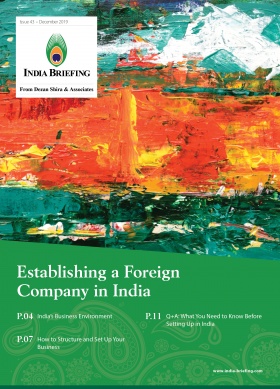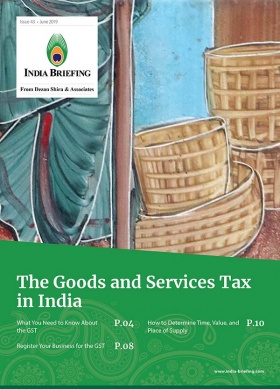President Trump Set to Visit India, US-India Trade Deal in Limbo
- US President Donald Trump will be visiting India from February 24.
- It is unlikely that a comprehensive trade deal will be signed between US and India although industry leaders are hopeful for a bilateral short-term trade agreement.
- Discussions on a US-India trade deal started almost two years ago, and the countries have yet to reach any clear consensus.
US President Donald Trump’s visit India on February 24 was touted to unveil a trade deal between the two countries. However, it has become apparent in recent weeks that the deal is in all but a limbo after Trump told various media that he is saving “a very big trade deal with India for later”, and also expressed uncertainty about a deal being signed before the forthcoming US presidential election, taking place in November.
Meanwhile, India has been working on Trump’s concerns, and has said that it does not want to rush into a trade deal as these decisions have long-term economic impact.
Since a wide range of issues are expected to be discussed during his meeting with Prime Minister Narendra Modi – covering issues as diverse as trade, investment, energy security, military, science and technology, research and development, and H1B visas – an agreement on outstanding trade grievances needn’t be ruled out just yet.
The discussions for a US-India trade deal started almost two years ago, with both sides insistent on their respective demands. For instance, the US has demanded duty cuts on Harley-Davidson bikes and removal of tariffs on American products. Meanwhile, India has asked for the removal of higher duties on iron and steel and easier certification for Indian fruit exports, to name a few.
Experts, however, say that during Trump’s visit India might agree to buy additional oil and gas from the US in a bid to narrow trade deficit.
India termed ineligible for GSP benefits
Earlier in February, the United States Trade Representative’s (USTR) office removed India from its Generalized System of Preferences (GSP), that allowed zero tariffs on US$5.6 billion of exports to the US.
GSP is a subsidy under the World Trade Organization’s (WTO) rule, allowing developing countries to boost their weak economies by getting preferential trade treatment.
Since India was classified as a developed country by the USTR’s office, it is now ineligible for benefits that are given to developing countries.
India, however, was in talks with the US ever since the idea of change in GSP rules was floated last year to ensure that it was allowed exemption under the system. India had also agreed to import US$6.5 billion worth of US goods in exchange of the GSP exemption, but the US appears to want more say in how India manages these imports.
With this latest development, chances of a trade deal during Trump’s visit has, put simply, plummeted. It also signals that trade talks between the two countries have been contentious. It will certainly take longer for both sides to work out a trade treaty that is mutually acceptable.
What is stopping the US and India from signing a trade deal?
Trade negotiations have slowed due to inter-ministerial considerations in India and Trump’s hawkish position on US trade interests.
India has already begun addressing US demands by agreeing to lower import duties on Harley-Davidson bikes and creating a separate tariff classification for them.
Apart from bilateral trade disputes, intellectual property rights has also been a bone of contention between the two countries. The US is concerned about the piracy of software, film, and music, among others, and has long urged India to strengthen protection for intellectual property. Days ahead of Trump’s visit, India’s cabinet approved a plan to sign an initial pact on intellectual property rights with the US. More details on the pact are awaited.
Another factor affecting bilateral trade negotiations is the US insistence on unconditional access to the Indian market for its dairy products. However, India requires a mandatory certification of dairy products – stating that the source animal is not raised on feed made of bovine extracts.
Since India wants dairy products that are derived from a cow that has been fed a vegetarian diet, based on religious and cultural grounds, it has been hard for the US dairy industry to sell their products in India.
The US also wants more market access to manufacturing products, medical devices, cuts on import duties on information and communication technology products, and reduction in trade deficit. Meanwhile, India demands market access for its products in agriculture, automobile, auto components, and engineering, as well as resuming the benefits that it claimed under the GSP system.
Industry expectations from US-India trade deal
India Inc. wants the US and India to be able to negotiate terms and sign a deal during Trump’s visit. Further, industry groups are hoping for higher investment commitments from US companies.
Another expectation that has been put forward by the US-India Strategic Policy Forum and US-India Business Council is the removal of foreign investment limits for US investors.
Currently, under India’s FDI policy, certain sectors permit 100 percent FDI while some others have still stipulated FDI limits. In certain instances, prior permission from the government is needed before investment and/or additional requirements need to be fulfilled by the foreign investor.
Meanwhile, Indian exporters are hoping that USTR office reverses its decision on the GSP labeling as so they can continue to export their products to the US tariff-free.
India Briefing is produced by Dezan Shira & Associates. The firm assists foreign investors throughout Asia from offices across the world, including in Delhi and Mumbai. Readers may write to india@dezshira.com for business support in India.
- Previous Article Statutory Audit for Companies in India: Frequently Asked Questions
- Next Article Trump in New Delhi: What Goods and Services is India Buying from the US?







